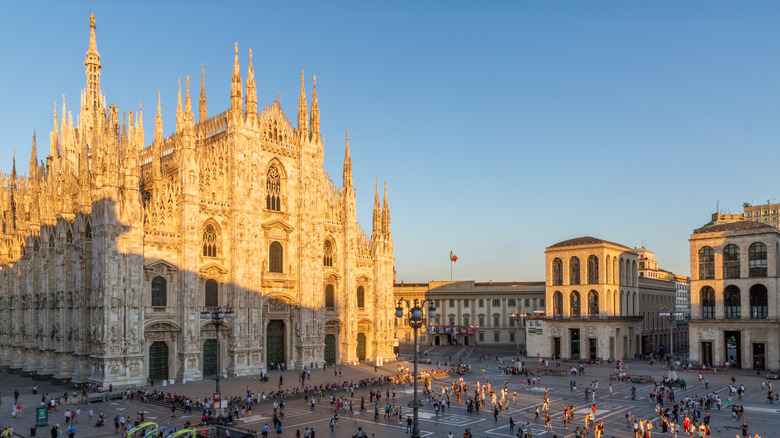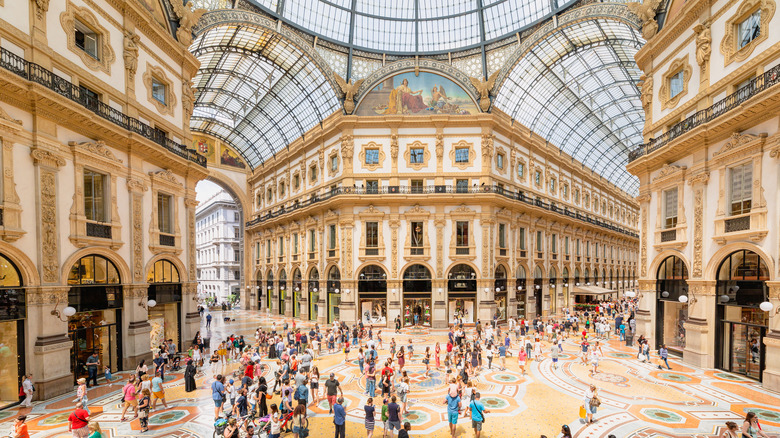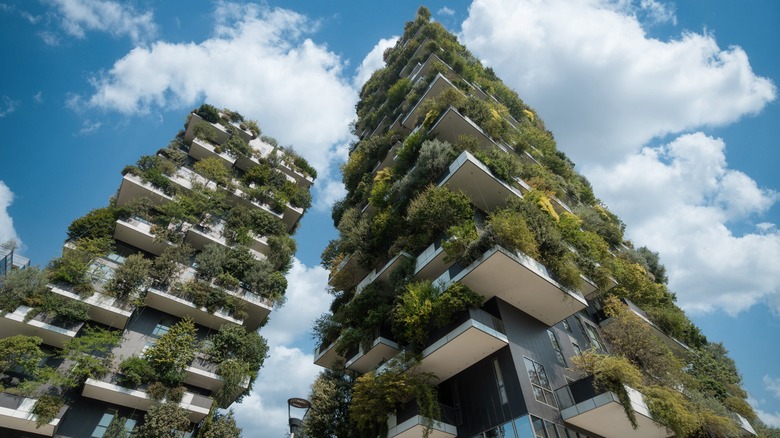The Most Underrated City In All Of Italy, According To Rick Steves
When your siblings are supermodels, it's hard to stand out. In fact, that may be the reason the Italian city of Milan hosts so many high-fashion catwalks — to compensate for the true historical beauties in its neighborhood, including Verona, Bologna, the romantic Italian village of Bellagio, and Cinque Terre. Milan, as Italy's center of industry and finance, can't equal charm and graces of those other gems. Nor does it boast many natural wonders outside the Alpine views visible on clear days, but instead presents a dense urban landscape teeming with traffic and business. As a result, Milan tends to rank low — if at all — on Italy bucket lists.
Not so for travel icon Rick Steves, who gives Milan more props than most. He calls it "Italy's most underrated city." Sure, the city of 1.3 million is no Venice, Florence, or Rome, he admits, but it still has a lot to offer. For Steves, that starts at Milan Cathedral. Built over 600 years ago and still not quite finished, the Gothic edifice overwhelms with its size and decoration — including 3,400 statues and 52 massive pillars — and still drops knees in proposal in the Piazza del Duomo out front. On the roof, Steves finds new appreciation in each flower, gargoyle, and saint's face carved in marble. "I realize the public was never intended to see this art. An expensive labor of love, it was meant for God's eyes only."
Steves' favorite Milan experiences
While Milan sprawls widely across the urban landscape, its major sights sit within a relatively small area around the cathedral, making it one of the most walkable cities in the world. In fact, the entrance to another Steves favorite, Galleria Vittorio Emanuele, is on the north side of the main square. This 19th-century neo-Renaissance shopping mall with glass-domed ceilings exudes elegance. The resident boutiques — Prada, Gucci, Louis Vuitton, and other A-listers — follow suit, as do the clientele who change the gallery into a catwalk at times. This makes it a prime place to park with a Campari and peruse the Milanese themselves, Steves notes. "Some of Europe's hottest people-watching turns my pricey drink into a good value."
La Scala is also within easy walking distance from the cathedral. Perhaps the world's most prestigious opera house, it opened in 1778 and has witnessed legendary composers, musicians, and singers on its stage, from Paganini to Verdi to Bellini. Watching any performance there is memorable experience, just don't forget the attached museum, which displays antique instruments, original scores, and portraits of great composers and musicians, including death masks. However, it's Leonardo da Vinci's The Last Supper that still reigns supreme. "The colors are faded," Steves observes, "but the composition is dreamy." Stepping out afterwards into the streets of Milan that he stamps his affection. "I emerge into the vibrant, modern city with renewed appreciation for Milan: Italy's most underrated city."
Beyond the greatest hits
Getting in the spirit of Milan means venturing beyond the central core. The first thing you might hit on the way is Sforzesco Castle. Dating to the 15th century, it has watched over the city for hundreds of years as the seat of power. It also offers hours of activities, with an expansive park outside and numerous galleries and rooms inside, some with works by Michelangelo and da Vinci. Other cool Milan spots include the 13th-century San Bernardino alle Ossa, home to an ossuary decorated with the bones of thousands. Follow that with a few life-giving breaths in the Brera Botanical Garden and a trip to Porta Venezia, where flowery Art Nouveau architecture still wows.
For the full Milan experience, meet the Milanese themselves. Start at the Navigli Grande. Alongside these canals lie dozens of restaurants, cafes, bars, markets, and shops full of locals, with the loudest buzz in the evenings. It's also worth swinging by the Bosco Verticale apartment buildings covered in a vertical garden of 800 trees, 5,000 shrubs, and 15,000 perennials. After, take a stroll through Milan's "Rainbow District," full of pastel homes in lilac, yellow, pink, blue, and mint green, boosted by flourishing flowers in spring and summer. At night, dance the night away with locals at Fabrique, or check out live music at Santeria Toscana 31. Keeping close to locals may also help you avoid the pretty but costly tourist trap while picking a restaurant on Italy.


